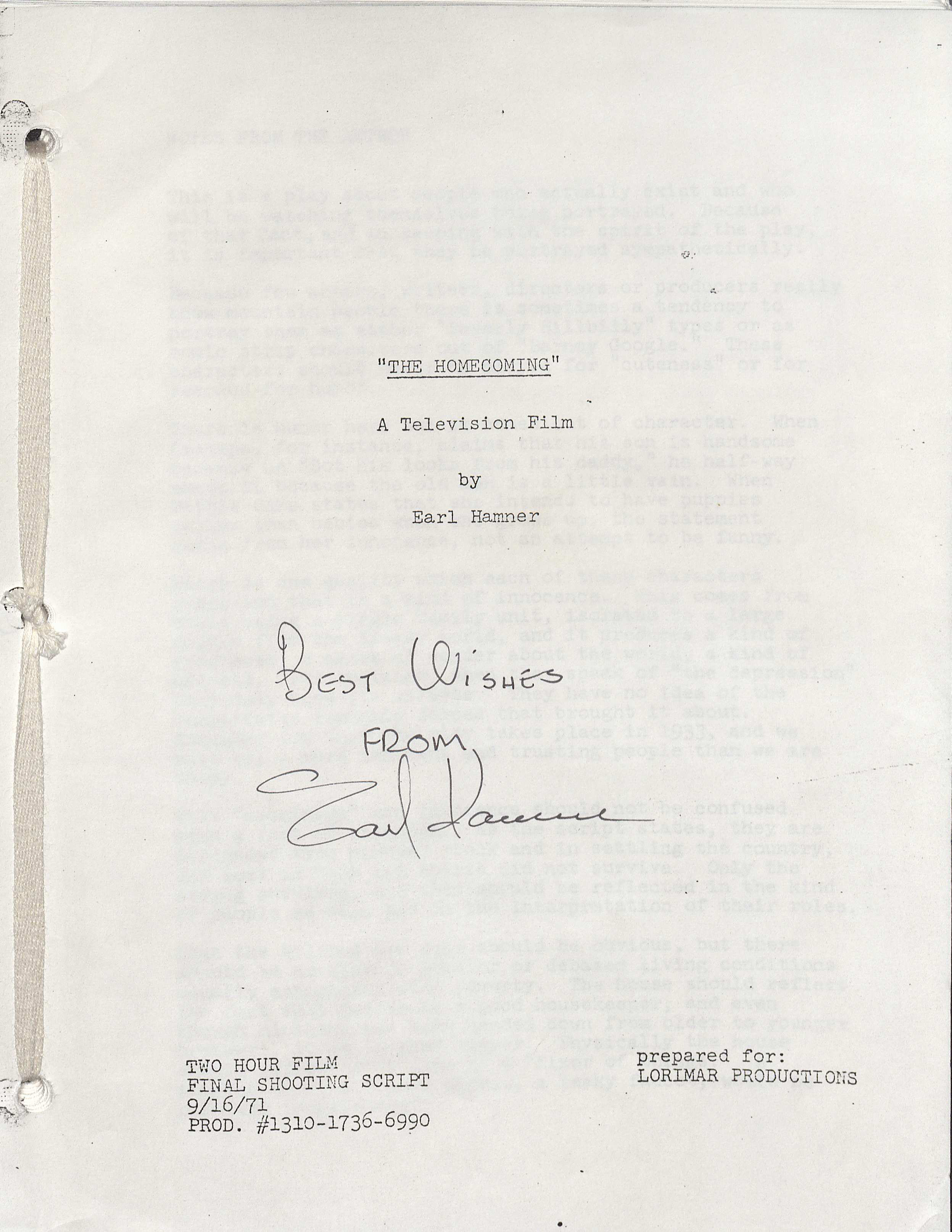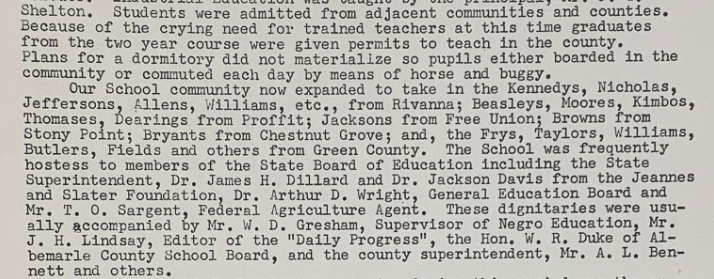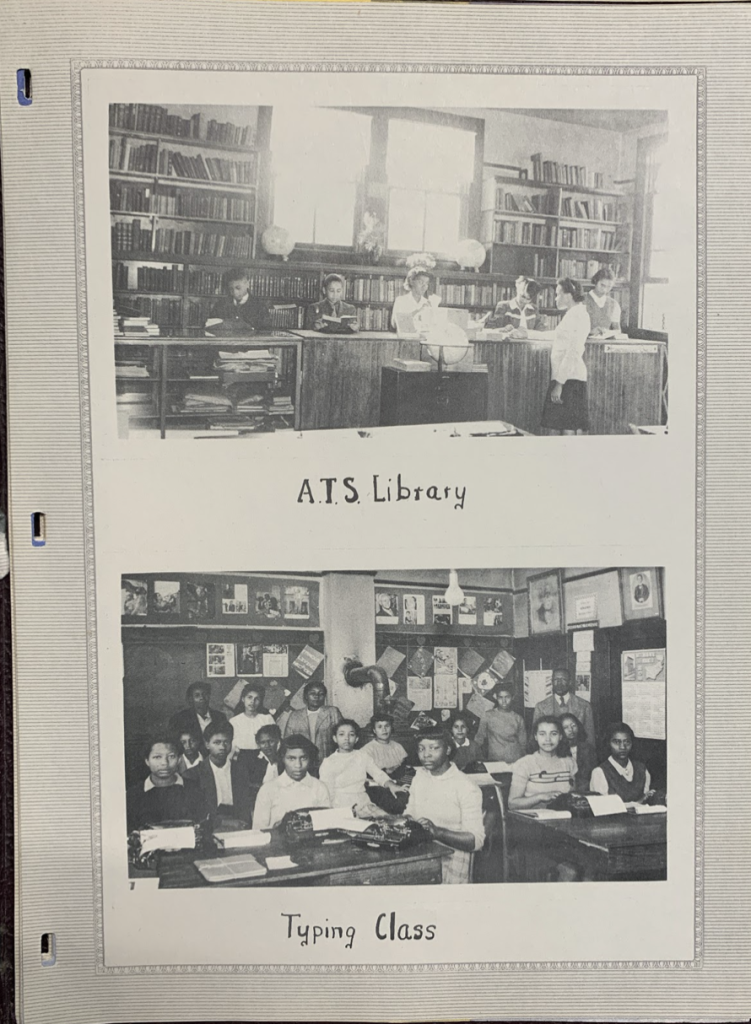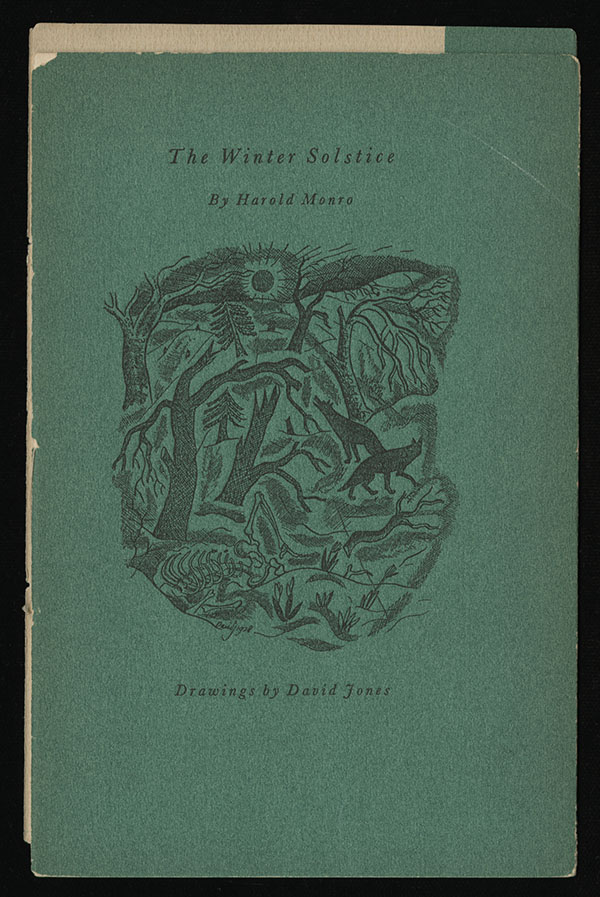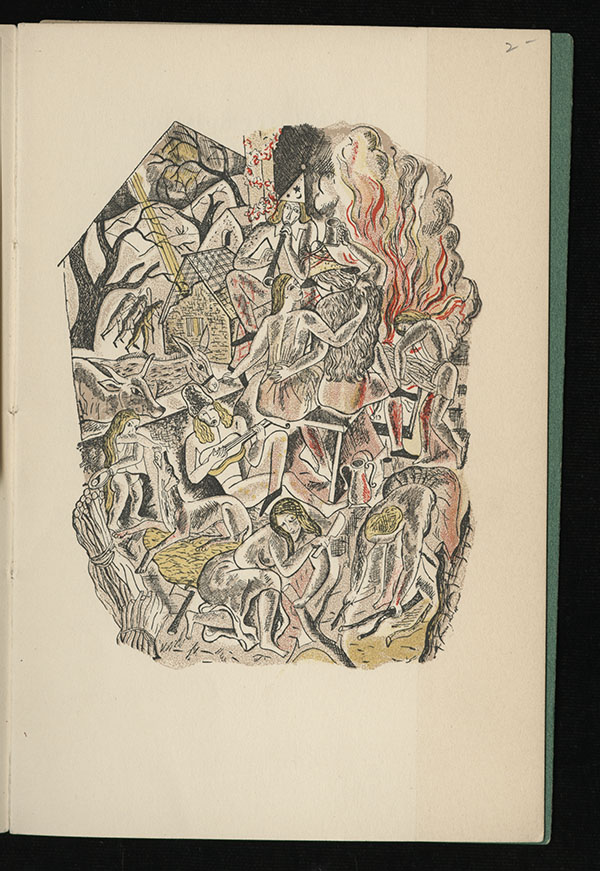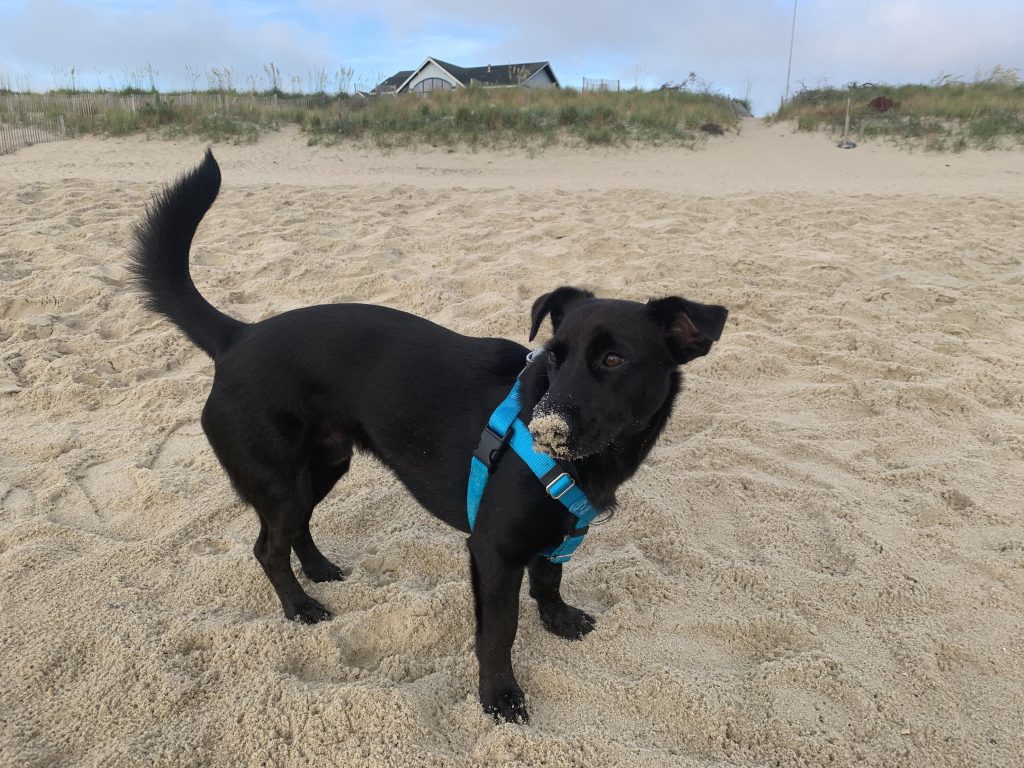Four notable annual winter festivals with similar secular and religious origins often coincide in December. Today, we celebrate Christmas (336 A. D.) which commemorates the Nativity of Christ and is probably the world’s most celebrated event.
Alongside Hanukkah, Winter Solstice, and Kwanza, these diverse festive holidays evoke time-honored universal values through feasts, gift-giving, decorations, worship, and music. This presentation of select festival holdings in the University of Virginia’s Albert and Shirley Small Special Collections Library is curated by Reference Librarian Regina Rush with contributions by Research Archivist Ervin Jordan and will continue over the holiday season to rekindle treasured holiday memories—and optimism—during these stressful times.
Christmas Eve
Although unsure of its exact origin, food historians agree eggnog originated from the British medieval drink “posset,” a hot milky ale. Eggnog has become an American cultural culinary staple for the Christmas holiday seasons since it was brought to the colonies in the 1700s. Search online for “eggnog recipes” and the results will exceed 18 million hits! Ranging from alcoholic and non-alcoholic to a cooked eggnog recipe, the basic ingredients include some variant of the following: milk, cream, sugar, whipped eggs whites, and egg yolk.

Ice cream in egg-nog?!
This printed recipe for “Real Eggnog from Ice Cream” was laid in a 1926 edition of The Physiology of Taste, or Meditations on Transcendental Gastronomy by Jean Anthelme Brillat-Savarin. First published in France in 1825, this classic work on all things gastronomical examines the intersections of food and culture. Brillat-Savarin’s wisdom and witticisms regarding food and its importance in society still resonates with modern gastronomes of today, which brings us back to the egg-nog and ice cream recipe. Was it worthy to share such a sacred space in this canon of gastronomy? Try it and see!

This clipping was found in the 1926 edition of The Physiology of Taste, or Meditations on Transcendental Gastronomy by Jean Anthelme Brillat-Savarin.
“To Make Real Egg-Nog from Ice Cream” a clipping found in The Physiology of Taste, or Meditations on Transcendental Gastronomy by Jean Anthelme Brillat-Savarin. Garden City, N. Y.: Doubleday, Page & Company, 1926.(TX637 .B86 1926)
Gift of Clarence Wagener
A Christmas Carol
Some of the traditions and festivities of Christmas as we know it today would not be celebrated without the influence of our British cousins across the pond. Sir Henry Cole invented the Christmas card in 1843, and Queen Victoria and Prince Albert popularized decorating Christmas trees in homes during the holiday season. And, of course, it goes without saying that Christmas is synonymous with Charles Dickens!
The culture that surrounds the Christmas holiday today is a direct correlation with his 1843 classic A Christmas Carol: family-centric holiday feasts, decking the halls, and even Ebenezer Scrooge’s promise to “honour Christmas in my heart and keep it all the year.”
In 1983, the Small Special Collections Library acquired a small collection of Charles Dickens miscellany (MSS 10562). The collection includes a liquor flask used by Dickens when he toured America, correspondence, and a portable desk, both pictured below. Our holdings also include several editions of the holiday classic, A Christmas Carol.

Charles Dickens’ writing desk and quill

This Liquor Flask was used by Charles Dickens during his travels in the United States

Charles Dickens began writing A Christmas Carol October 1843. It was published December 19, 1843. A Christmas Carol , 1843. First edition 1st issue, with original covers (E 1843 .D53)
Written by children’s book author Mary Packard, this Advent calendar was created around the Christmas classic A Christmas Carol by Charles Dickens. Housed in a pictorial glazed paper fold-out “book,” this Advent collection of miniature Christmas ornaments are meant to be read one per day. The 24 booklets follow the chronology of Ebenezer Scrooge’s journey from “a squeezing, wrenching, grasping, scraping, clutching, covetous, old sinner” to a man who “knew how to keep Christmas well, if any man alive possessed the knowledge.”
Mary Packard. Dickens’ A Christmas Carol Story Book Set & Advent Calendar. New York: Workman Publishing, 1995. (McGehee 05770 no.1/24)
The McGehee Miniature Book Collection
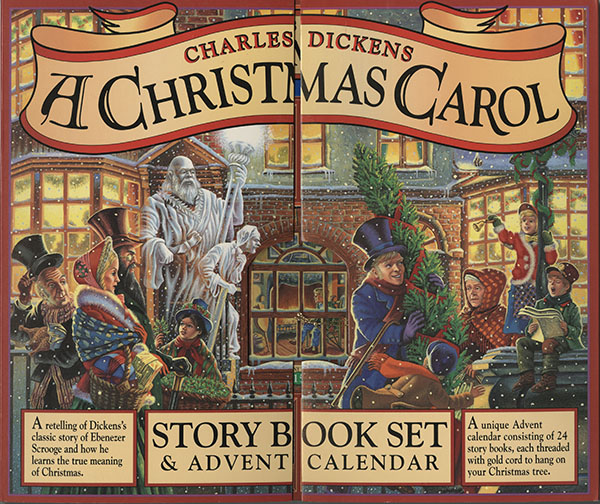
From the McGehee Miniature Book Collection, this book’s cover folds out to reveal 24 booklets and as Advent calendar journey of Ebenezer Scrooge.
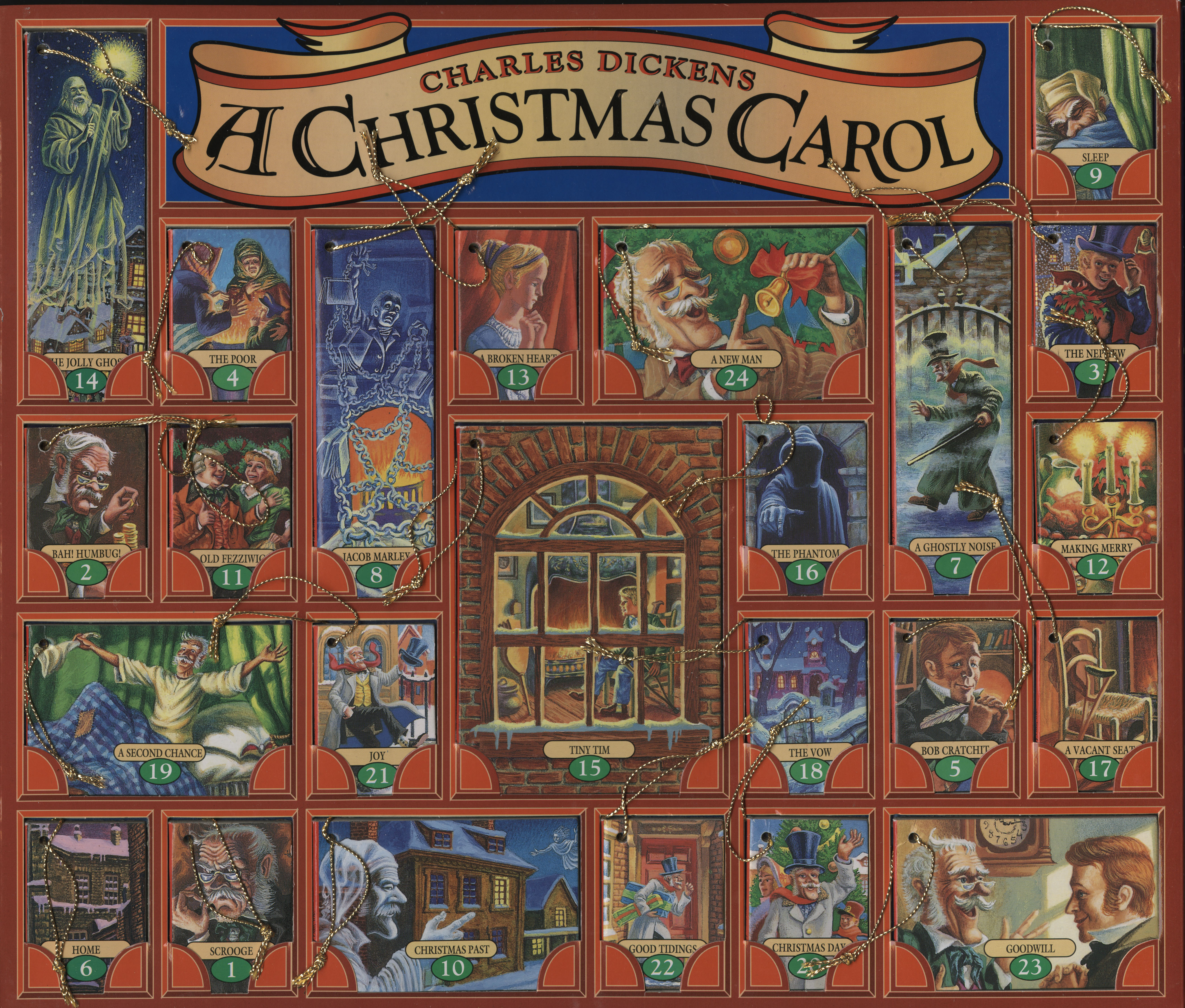
Inside the book, 24 miniatures follow the chronology of Ebenezer Scrooge’s journey from “a squeezing, wrenching, grasping, scraping, clutching, covetous, old sinner” to a man who “knew how to keep Christmas well, if any man alive possessed the knowledge.”
Good Night, John-Boy
The Small Special Collections Library holds a small but rich collection of the late Earl Hamner Jr.’s archives. A Virginia native and Emmy-winning television writer and director during the 1970s and 1980s, Hamner’s collection includes a first edition of his 1970 novel, The Homecoming: A Novel about Spencer’s Mountain, the final shooting script for the 1971 film The Homecoming: A Christmas Story, and television scripts for three mid-1970s episodes of The Waltons. The novel, drawn from Hamner’s childhood experiences growing up in Schuyler, Virginia during the Great Depression, was the impetus for the film. Originally airing on CBS on December 19, 1971, the movie was so popular that it spun off a series, “The Waltons,” which aired on CBS in September 1972 and became wildly popular, lasting nine seasons.
Earl Hamner, The Homecoming, 1971, Typescript (MSS 10380) and “Waltons” Television Scripts, 1975 (MSS 10380-b).
